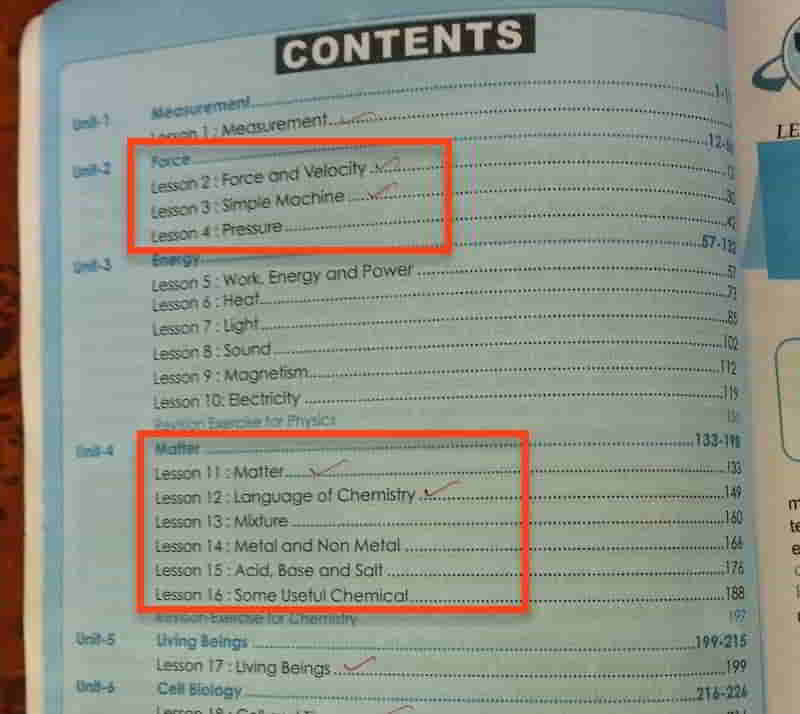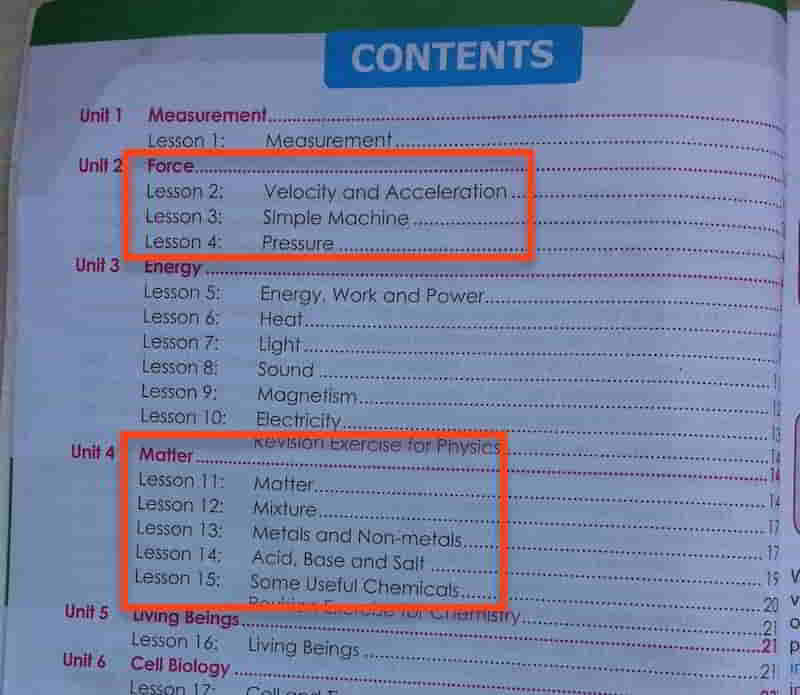School textbooks in Nepal are “Revised and Updated” regularly…so say the inside of their front covers!
Some every year, like the English versions of privately published secondary school science textbooks I have seen.
You wouldn’t be blamed for being impressed because, naturally, you would have concluded that, those involved in their production (apparently, the listed authors aren’t necessarily the ones who write them), must be very diligent and concerned educators, among other things. Why else would they revise and update a textbook every year unless they wanted to make sure the students were receiving the most up-to-date information on the most recent discoveries and development in the subject etc., right?
Wrong! Nothing could be further from the truth!
My nephew’s first grade computer textbook, for instance, was “Revised and Updated” most recently in 2016. But, let alone update it with the latest (such as with details of cloud storage), sadly, they hadn’t even removed materials about something that has been obsolete for over a decade: floppy disks! So, when a textbook says “Revised and Updated” it doesn’t actually mean what that phrase means.
(Other instances of something NOT denoting what its supposed to in Nepal that I have written about are road-block signage screaming “Stop! Police Check!” and crosswalks (zebra crossings), neither of which mean to drivers what they are supposed to unless they are accompanied by one or more policemen reinforcing it!)
I blamed the oversight in my nephew’s textbook on the carelessness of everyone involved in its production: everyone from the authors to the graphic designer to the series editor to the publisher.
Turns out that might be only part of the story!
There’s actually a cunning and greedy reason behind the practice of “revising and updating” the textbooks so regularly. It has NOTHING to do with education and EVERYTHING to do with making money!
I had heard a while ago that older siblings weren’t able or allowed to pass textbooks down to their brothers or sisters attending the same school. At the time I heard it, I thought nothing of it until a couple of weeks ago when I was told the reason: the books are “Revised and Updated” every year! My initial thoughts was that the revisions and updates must be pretty drastic.
But then I wondered…. When there’s hardly been any revision to the curriculum for a long time, how would “revised and updated” versions of a textbook really be significantly different in content from one year to the next?
Of course they weren’t. At least the science textbooks I inspected were NOT updated with recent discoveries and developments at all, no different from my little nephew’s computer textbook.
I compared the 2015 and 2018 editions of the grade 8 science textbook students at a school I visit use.
Compare the entries inside the rectangles. They appear to be at least a little different!


So, I took a peek inside to confirm. Sure enough, there were NO difference in the content! All they had done was to move different sections around, that’s it.
AND for that reason alone, schools force their students to buy the latest edition instead of allowing them to use their older sibling’s or an older, cheaper, second-hand textbook. Of course, how the authors and/or the producers of these textbooks benefit from this is obvious. But what’s in it for the school?
There are private schools that arrange textbooks, along with school bags, uniforms, notebooks, pens and pencils etc. for their students and charge the parents. (Sure, for wealthy parents unable to make those arrangements for whatever reason, or unable to get someone at home to do this on their behalf, this is a convenience.)
But, you see, doing so the schools make a handsome profit by either charging above market price for them all or getting a handsome kickback (“commission” in Nepali) from the publisher for adopting their textbooks!
This is completely in line with the business model of private educational institutions in the country: make as much profit as you can. (Click here and here for more on that.) Some schools issue customized stationery and other accessories, complete with school logos and all. Again you don’t have to be Einstein to figure out why!
Anyway, I want to reiterate a question I raised in My My, Hey Hey, My English Book Has It Yay! (In the blog, I detail the issues with a Grade 3 English book.) What all happens to a book from when it is a manuscript in the hands of the author(s) or — as the case may be in Nepal as I have been told — the publisher to when it makes it into the school bags of children?
Does the Federation of Nepal Books and Stationery Business have some role to play in there somewhere? If this is like most other Federations or associations in the country, its aim would be to maximize profits for its members who, I am sure, are all or mostly private publishers and distributors making money, obviously, selling textbooks!
In other words, this could be a syndicate (and government lobby), not unlike many of the associations and federations (such as the syndicate that essentially operates like a cartel of public transportation, the association of silver and gold businesses, the association of pharmacies, the association of drinking water delivery companies, the association of the fuel tankers etc.), whose sole purpose would be to create a monopoly and maximize their profits from the consumers of their businesses and services. Do they have a hand in this?
Strangely enough, we also have an association of school chldren’s guardians called the Guardian Association Nepal. I wonder what they do, especially in a society where school fees, or rather how much one spends on the education of ones children, is a status symbol! (Click here and here for more on that.)
So, when so many of those associated with education appear to be hell-bent on making money more than providing education, forget providing quality education, what can one expect?!
This is but just one example supporting my assertion. As for the others, well, here are just…several of them:
- timetables (a lesson is scheduled for everyday AND on the same period for the convenience of the teachers),
- the practice of employing “helmet teachers” (part-timers so that they don’t have to pay as much in salaries),
- school hours (some schools run from 6 to 10 am so that they can run two or more shifts on the same campus),
- lack of space not just in the classrooms but also in general,
- lack of opportunities for children to engage in physical activities,
- low pay and low respectability for teachers,
Our education system also suffers from many other issues, several of which include the following:
- lack of counseling service,
- lack of education on the human reproductive system and everything associated with it (such as puberty, menstruation etc.),
- lack of education on the social system (the caste system) of the country,
- teachers still employ methods employed in the ancient Aryan-Sanskritic education system,
- lack of opportunities for children to acquire higher level thinking skills,
- lack of well-trained teachers,
- lack of good teacher-training institute,
- corruption in the system has the dubious honor of being the worst etc. etc. etc.
(My mate Pete Pattisson in Centralised and failing highlights just that, i.e. how the highly centralized system of teacher assignment to public schools around the country is failing our education system.)
The good news is, the government is taking some action against one of the many practices by schools to fleece parents. According to this May 6 article the government is baring private schools from selling uniforms, stationery, and school bags. It’ll be interesting to see if and how long they enforce that since that, in the end, will determine the success of the initiative.
But of course these little steps, tweaking a little here and tweaking a little there (such as changing the grading system of the national level examination from numbers to letter grades, to give another example) is NOT going to dramatically improve the system and all of a sudden serve a majority of our children. I am willing to guess that our current abysmal education system has been and continues to fail over 90% of our children! Fail in the sense that, even children with a twelve-year education — forget the others — likely struggle to display the mastery of any real practical skill apart from the ability to memorize and recall facts and figures.
What we need is a dramatic overhaul of the system, starting with the scrapping of the grade 8 local level examination and the grade 10 national level examination covering materials studied in grades 9 and 10.
The Science curriculum, as it stands now, is quite open. I haven’t looked at the other curricula but I suspect they are as open as well. And if teachers are NOT forced to teach to the examinations, I’m pretty sure they’ll stop teaching from those useless textbooks. Yes, pretty much all the textbooks I have seen — science and others — are of horrendous quality.
In the mean time, parents who are very concerned about their children’s education can do a few things to better prepare them for the twenty-first century.
The first is to read to them if they are very young or if they are still in the womb! If they are not, then do everything you can to instill a reading habit in your child by buying and giving them books as presents and reading together. Reading, more than any other educational activity, has the most impact on a child’s academic performance to say nothing of the many other benefits of reading. I know it made a huge difference to me and, for the same reason, I have been reading to my little nephew.
The other is to talk to your children. I mean, have real conversations with your children, by sitting down together, making eye contact. Develop a relationship where you share even your feelings with them, which I know is not something we Nepalis do. Ask them probing questions and, here’s the third thing you can do, challenge them, question them to encourage thinking critically about their attitudes, their behaviors, their views, their actions, their lives etc. Our schools certainly will not impart critical thinking skills to our children; it’s up to us to impart some of that in the way we informally educate them.
What do you think?
* * * * * * * *
References
Added after the publication of the blog post because of their relevance.
Kantipur (Aug. 6, 2018). अनुसन्धानमै बित्यो एक वर्ष | (A Year Gone Already in Investigation). This is about the corruption case Commission for the Investigation of Abuse of Authority has brought against Sajha Prakashan, public publishing house that produces all the textbooks public educational institution around the country use. “कर्मचारीका अनुसार [महाप्रबन्धक डोलिन्द्रप्रसाद] शर्माकी श्रीमतीको नाममा रहेको अक्सफोर्ड पब्लिकेसन र समिसम प्रकाशन नामक संस्था शर्माकै रहेको र समान प्रकृतिको संस्थाका सञ्चालक साझा प्रकाशनमा पदाधिकारी बन्नु नियमवालीविपरीत छ ।” [Added on Aug. 6, 2018.]
Nepali Times (Sept. 14, 2018). After quantity, Nepal’s education needs quality. “Inadequate training of teachers and over-reliance on defective textbooks keeps learning sub-standard.” [Added Sept. 20, 2018.]
Nepali Times (Aug. 7-13, 2015). U r welcome, wanna cu ASAP 4 a drink. “Textbooks in Nepal’s schools aren’t just outdated, they are outrageously bad.” [Added Sept. 20, 2018.]
The Kathmandu Post (May 27, 2017). Un-learning. Another excellent article about the abysmally poor quality of our textbooks. This one is about an English textbook. [Added on Nov. 16, 2018.]
